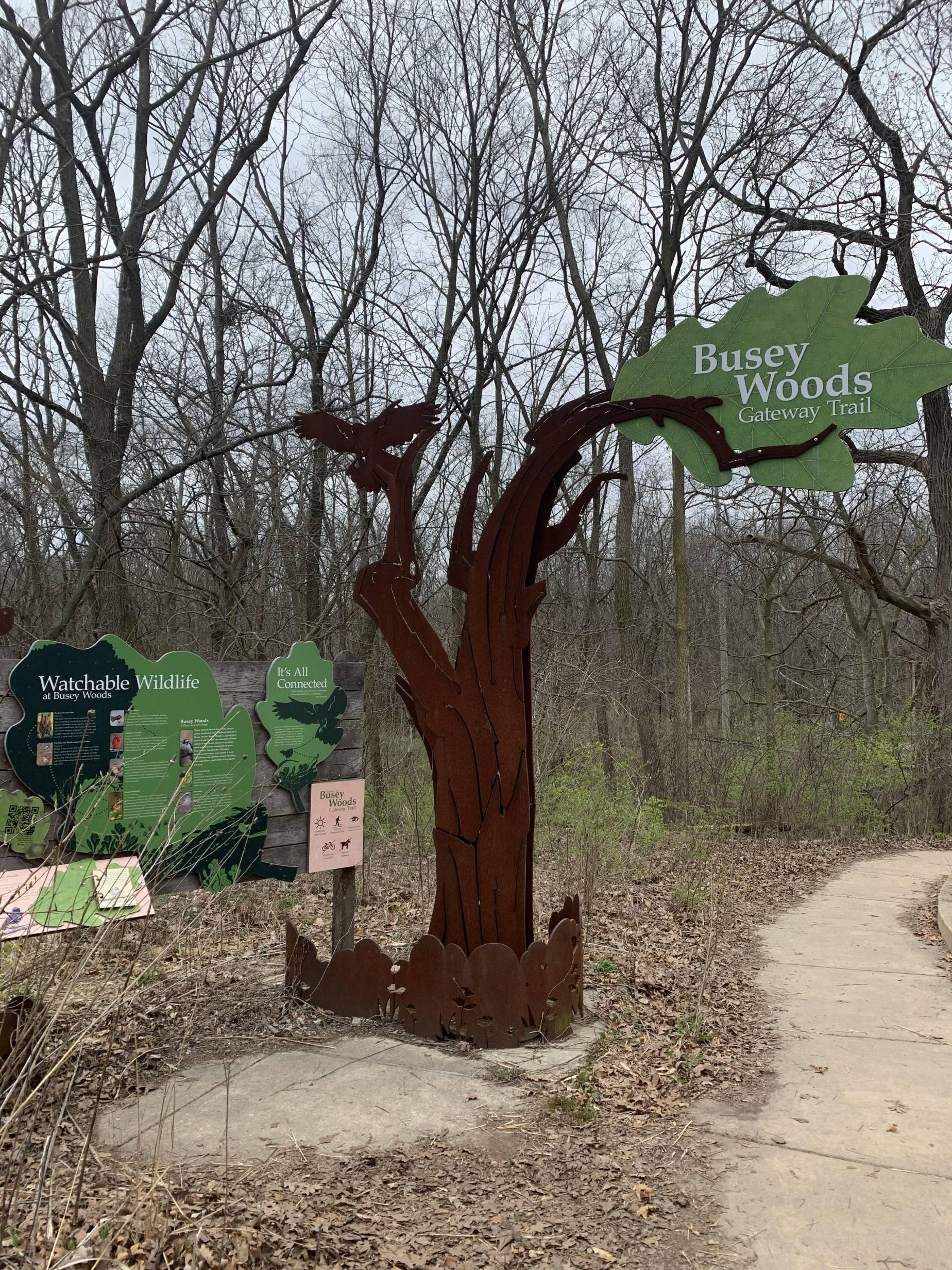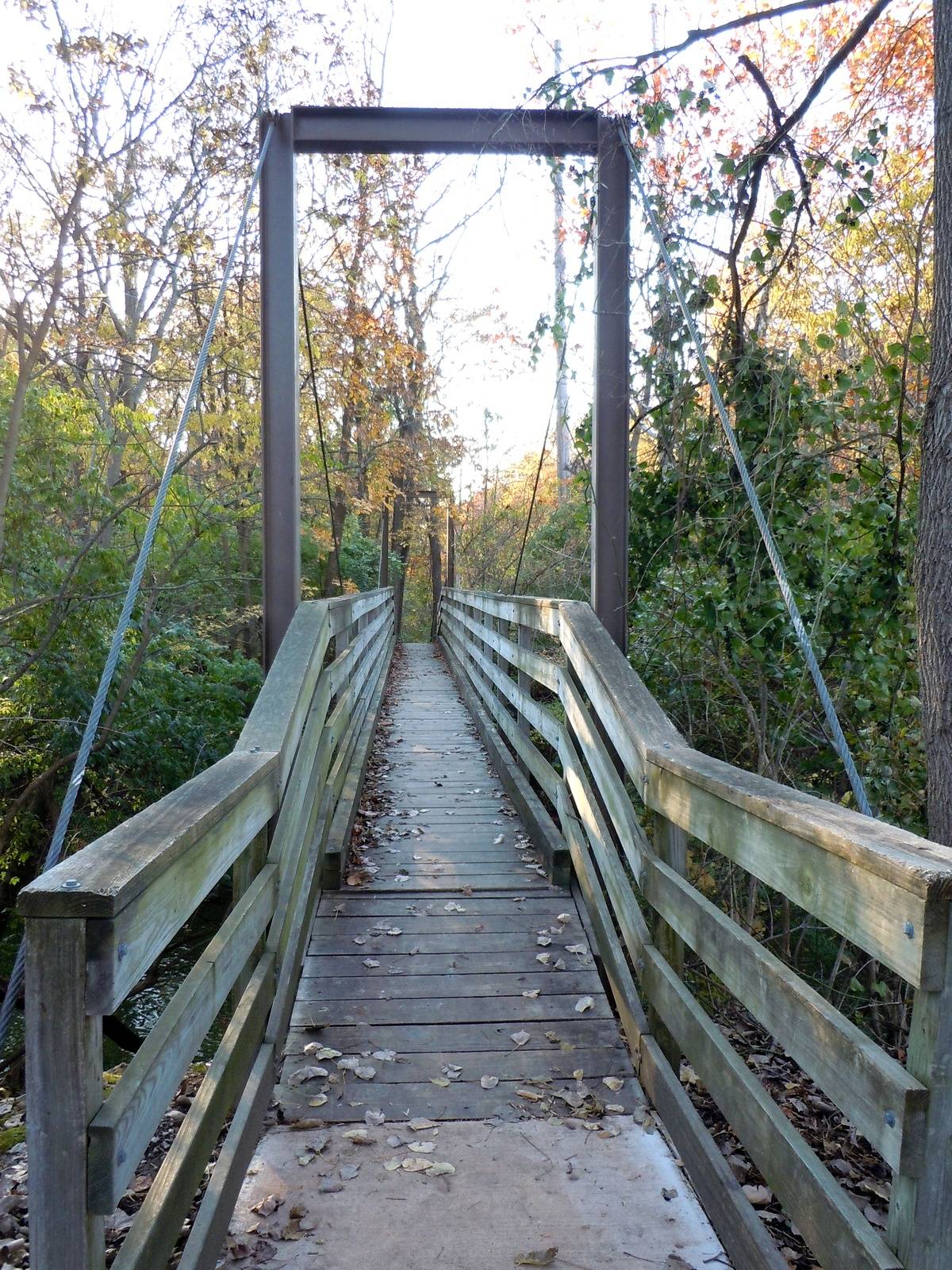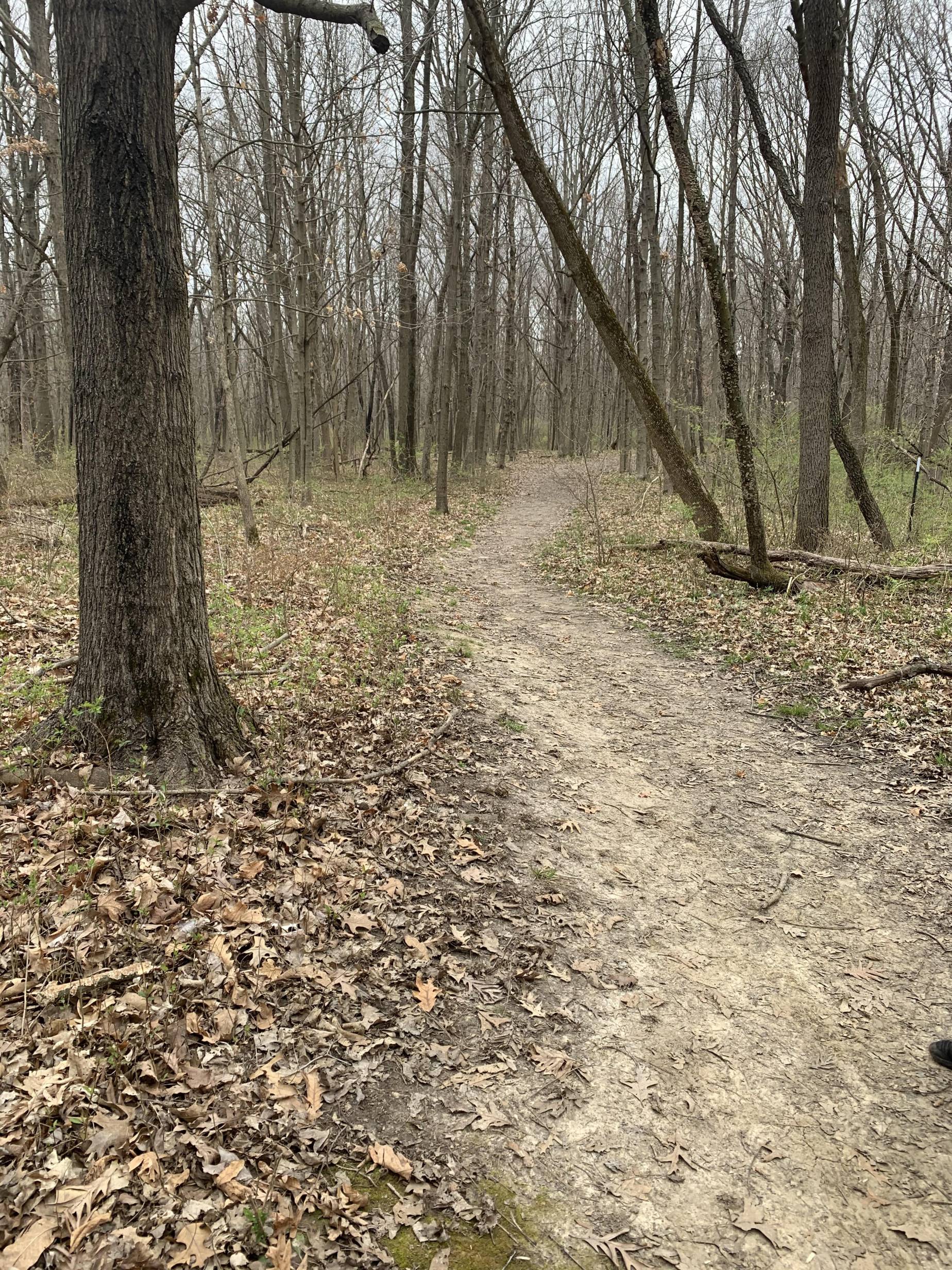My children have become fairly obsessed with the movie Onward since we first saw it in theaters, before the pandemic crippled our collective way of life. Now that it’s available to stream, they can recite the lines, and pretend that magic spells do exist, and have the power to make things, and themselves, very different. I am not sad about this at all; it is a movie that speaks to me in big ways, having two boys of my own. They now both have very special magic staffs that they found in Busey Woods in Urbana recently. Our oldest son, Ellis, recently told me that he was working on a brand new spell, a spell that will cast off the coronavirus from everyone, “except a few people.” When I asked him which people he was referring to he said “I am not going to tell you, but trust me, we don’t want them around.”
I feel that, kid.
The simple history of Busey Woods goes something like this: It is a preserved patch of what was once known as the “Big Grove.” In this area, flattened by the Wisconsin glaciation, it was an anomaly amidst the prairie. Huge oak trees dominated the forest. It was a small but substantial patch of what is now North Urbana, estimated to be about ten square miles. As settlers developed the area, the trees were used as lumber primarily, but large tracts of it were cleared to make way for railways and manufacturing facilities.
Indeed, the name Busey is from the same Busey family that prominently settled Urbana. The woods’ final private owner was Catherine Klassen, the great great granddaughter of Samuel T. Busey, a lieutenant colonel in the Civil War. He was also a State Representative who unseated Representative Joseph Cannon from Danville in 1891, a decade before Cannon would go on to become one of the most powerful Speakers of the House in Congress. But I digress. A different article, perhaps, for a different day.
When Klassen put the land up for sale to become an industrial park in the 1970s, a group of environmentalists formed an organization called The Committee for the Preservation of Busey Woods. It was led by a man named Donald Hansen, and they found a way to turn it into a nature preserve. It was then donated to the University of Illinois Foundation, who then leased it to Urbana Park District. Fast forward to 1979, the Anita Purves Nature Center was built on the east end of the preserve off Broadway Avenue and dedicated in honor of Ms. Purves, an activist who worked at Leal Elementary School teaching nature study in an enrichment program.

Photo by Seth Fein.
Today, it remains a local treasure. The Center has been expanded upon, and there have been other additions worthy of reverence over its 40 years of existence. As a kid growing up in Urbana, it was a place you went to on field trips, and if you had the sort of parents who believed in the importance of this kind of engagement, with your family too. It sits next to Crystal Lake Pool, so oftentimes, my Mom would force a small hike before we hit the water to work up a sweat. It was a place I loved as a child. I have such fond memories of creating my own dimensions inside of its towering canopy, dreaming up new identities for myself, and nemeses to go to battle with.
Then, I grew older, and I stopped going, almost entirely. I never stopped dreaming, that’s for sure, but I stopped finding places like this to dream.
I am not much of a “nature person”, by and large. I enjoy nature, but I do not seek out trails and hikes or climbing and exploration of any kind. If I am being honest, I’ve been too caught up in the modern moment to spend time doing nothing more than just walking around with no real intention outside of just appreciating what is in front of me, daydreaming about what might be or what once was. It’s just who I am, I suppose. I like going to parks, and spending time with friends, drinking wine on the sly in Hessel with friends to chat with, or having a picnic lunch with my family, after playing a sport of some kind. But walking around into the abyss with no intention never appealed to me, not ever, as an adult.
That’s all changed now.
If you haven’t ever been to Busey Woods, you should absolutely go. It’s sort of hard to process that it even exists here in Urbana, since we’re one of the most topographically challenged areas in the entire country. There’s a majesty to both the little boardwalk — which is just one third of a mile long — and to the foot trails that have been paved by literally decades of people doing nothing more than walking around just to breathe in the air and catch a bluejay or two, maybe some deer sipping water from the creek. When you enter, you cross a wooden bridge that makes you feel like you are truly about to enter some place else. It is so bucolic that I sometimes feel my knees start to buckle a bit.

Photo from LocalWiki.
In Busey Woods, our family has come to find a new understanding about what is important about being together, and about appreciating where we live. They’ve indeed found magic staffs, and Phoenix gems to activate them, as it were. They have been manufacturing plots of good vs. evil, nature vs. machine, COVID vs. the chance to just play with some friends.
In Busey Woods, I’ve found my own sort of magic, too. I no longer care what is in my email while I am there. I do not wish to check Twitter or even care the slightest bit about which local politico typed a diatribe on Facebook about something I probably agree with but would have presented differently. I simply do not care at the moment, and it feels glorious.
I have a newfound appreciation for what Busey Woods is to this community, and why it is so valuable to who we are as a culture. I’ve heard people in the past say it’s too small, that it’s nothing special. I might have even nodded in agreement, allowing my ignorance to take precedence above my past knowledge and memories of the place. On the contrary, I think it is reflective of what makes us special: its size, its history, and its utility.
Indeed, there is magic in those woods, if you are willing to look for it. I am certainly glad I did.








